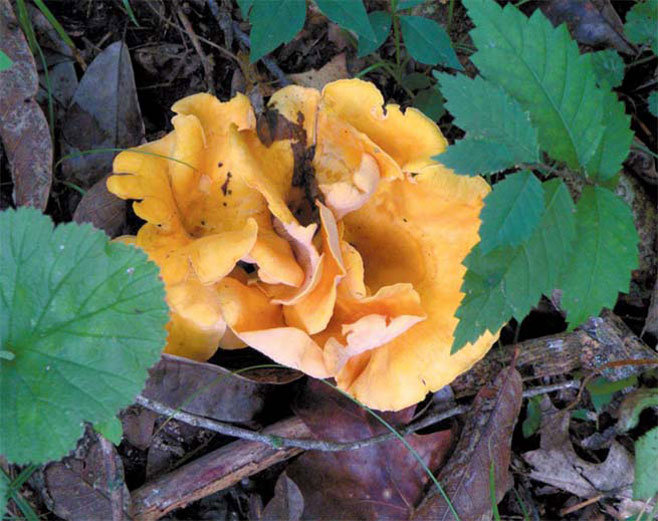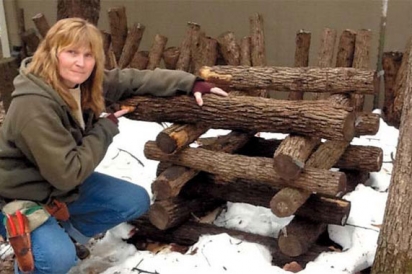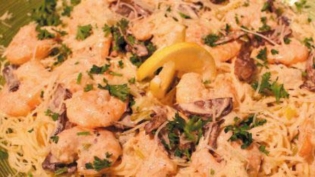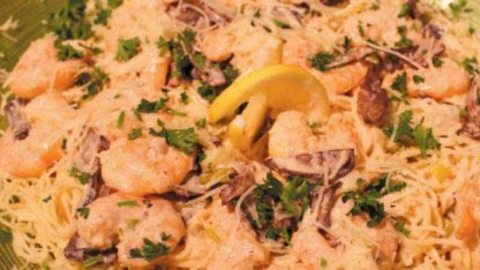Mushroom Foraging with Barbara Fetchenhier
Exactly three days after a big rain in mid-summer, Barbara Fetchenhier grabs a pocketknife and a backpack stuffed with plastic grocery sacks and hikes up to a secluded limestone ridge in south central Missouri. There, where the evergreens change to an open hardwood forest, she begins her hunt for wild chanterelles, a colorful, trumpet-shaped mushroom with a fruity scent.
“I just happened to walk into these woods one day and saw all this orange stuff growing,” she recalls. “I’ve been coming back for the last eight years. It’s a magical place.”
Unlike more common mushrooms, the chanterelle refuses to be easily domesticated. Although it grows widely in Europe and North America from the Pacific Northwest to the mid-Atlantic coast, it requires just the right mix of moisture and dappled sunlight. When conditions are right, Barb and her husband Jeff spend hours collecting bagfuls of this culinary delicacy. Sometimes they pick more than 35 pounds of chanterelles in a day, emerging from the woods with orange-stained fingers that smell like apricots.
Chanterelles are prized by top chefs, and most of Barb’s wild mushrooms wind up in Kansas City area restaurants, including the upscale Justus Drugstore. This farm-to-table eatery in Smithville serves gourmet creations by Jonathan Justus in an old family pharmacy building. “He’ll take as many as I give him, and he even designs recipes around them,” Barb says. She used to drive into town the day after picking, delivering the harvest while it was still fresh and moist, but now she uses a broker to make arrangements.
Anything leftover she freezes or dehydrates for future use. She also gives away samples in small bags with recipes attached. Some of the lucky recipients are volunteers at Powell Gardens, where she works as an interpreter giving tours and workshops for the 12-acre Heartland Harvest Garden.
“Chanterelles are not good raw, but they’re wonderful in frittatas, soups and stews or beef stroganoff,” she says, adding “sometimes I’ll crumble them instead of breadcrumbs as a coating for meat.” Another favorite dish is wild mushroom lasagna (“the secret is to grate some lemon zest in the ricotta,” she notes).
Barb supplies another type of mushroom to local chefs—the darker, umbrella-shaped shiitakes that grow on sawed-off sections of white oak logs stacked in a shady spot in her back yard. First she drills a series of two-inch-deep holes in the logs and soaks them overnight in cold well water. Then she inoculates them with mail-order spores and waits. “It takes a full year for the first harvest, but then they’ll produce for another five years or more,” she says.
She also gathers wild hen-of-the-woods and chicken-of-the-woods mushrooms for personal use, and teaches a class on using cardboard paper towel tubes dipped in boiling water for growing oyster mushrooms, a fun activity for families with children. While cultivating mushrooms is generally a safe practice, identifying wild mushrooms can be difficult. Many look-alike varieties are deadly, and Barb advises finding a mentor who can offer expert advice. She also performs a spore print test to confirm that her harvest is edible.
“The fungi world is the biggest plant family on Earth,” she says. “Some people think that mushrooms are weird things and a strange hobby, but I love them. To me they’re delicious.”








